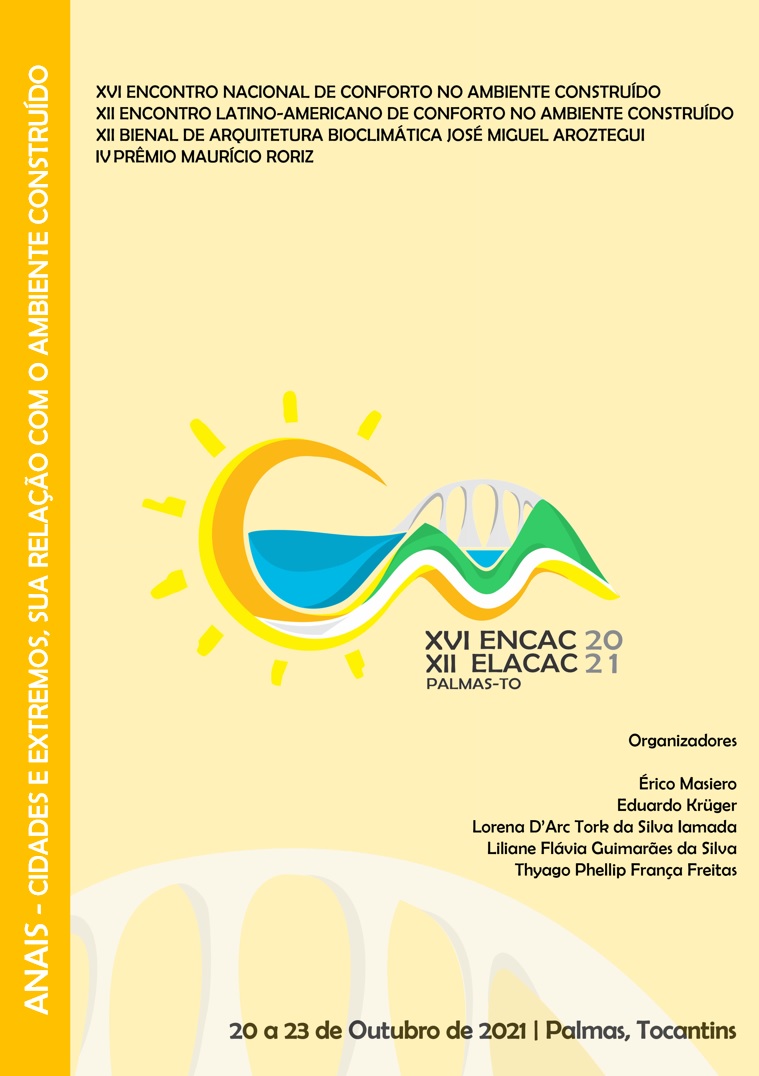ANÁLISE DA EFICIÊNCIA ENERGÉTICA DA ENVOLTÓRIA DE EDIFICAÇÕES RESIDENCIAIS CONFORME INSTRUÇÃO NORMATIVA DO INMETRO (INI-R)
Keywords:
INI-R, energy efficiency, residential buildings, computational simulationAbstract
Buildings are subject to complex thermophysical phenomena, which impact occupants’ thermal comfort and energy use for air conditioning. In the last decades, public policies have been implemented in Brazil to promote the adoption of energy efficiency measures in buildings for reduce the energy consumption. Inmetro's Normative Instruction for the Classification of Energy Efficiency in Residential Buildings (INI-R) is being updated to match its building simulation method to the procedure presented in NBR 15575, the Brazilian normative for building performance. This study aims to analyze different energy efficiency strategies for a single-story residential building, adopting the simulation method presented on the proposal of INI-R. The strategies analyzed are related to building materials, colors, openable areas for ventilation, and shadings. The climates of Florianopolis (SC), and Palmas (TO), were chosen for the study. Also, a thermal balance analysis was conducted to understand the heat exchanges on different building surfaces. The results show that the adoption of the proposed energy efficiency strategies improves the building performance, as they result in better performance values and, consequently, energy efficiency classifications. The use of different strategies in combination was able to achieve the highest energy efficiency classification. It is concluded that the most effective strategies are the ones that protect the building from solar radiation, such as the use of shading on windows and low absorptance colors on the roof.
Downloads
Published
How to Cite
Issue
Section
License
Copyright (c) 2023 ENCONTRO NACIONAL DE CONFORTO NO AMBIENTE CONSTRUÍDO

This work is licensed under a Creative Commons Attribution 4.0 International License.




